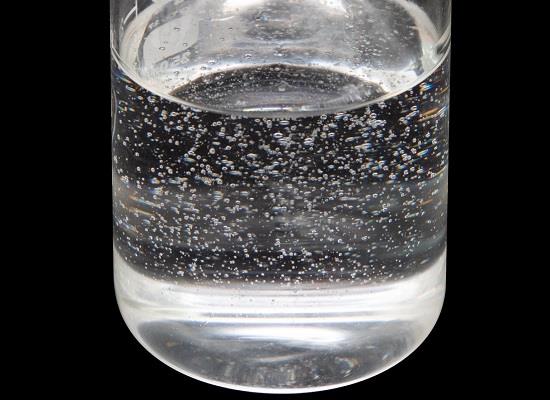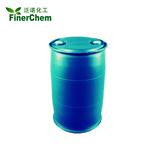Vinyltrimethoxysilane: Applications in Polymer Composites and its Safety Risks
Jul 23,2024
General Description
Vinyltrimethoxysilane is a versatile compound with significant applications in polymer composites and biomimetic apatite formation. It enhances flame retardants' properties in high-impact polystyrene by improving dispersion and compatibility through modification with ammonium polyphosphate. The incorporation of Vinyltrimethoxysilane-modified flame retardants and graphene boosts thermal stability and flame retardancy, as observed in various tests. Moreover, Vinyltrimethoxysilane facilitates the biomimetic formation of bone-like apatite layers on polyethylene surfaces, showing promise in biomedical applications. However, its usage poses health risks, including skin irritation and eye damage, emphasizing the importance of proper handling and safety precautions.

Figure 1. Vinyltrimethoxysilane
Applications in Polymer Composites
Modification of Flame Retardants with Vinyltrimethoxysilane
Vinyltrimethoxysilane plays a pivotal role in enhancing the properties of flame retardants used in polymer composites, specifically high-impact polystyrene (HIPS). In the modification process, ammonium polyphosphate (APP) is treated with Vinyltrimethoxysilane, a silane coupling agent also known as Si-171. This modification improves APP's surface characteristics, allowing for better dispersion and reduced agglomeration in the polymer matrix. Fourier transform infrared spectroscopy (FTIR) and scanning electron microscopy (SEM) analyses confirm that Vinyltrimethoxysilane effectively bonds to the APP, altering its surface chemistry and morphology to enhance its compatibility with HIPS. This results in a more homogeneous distribution of APP within the composite, which is critical for achieving uniform flame retardant properties. 1
Enhanced Flame Retardancy and Thermal Stability
The incorporation of Vinyltrimethoxysilane-modified APP (APP@Si-171) along with graphene into HIPS leads to significant improvements in thermal stability and flame retardancy. This synergy between the modified APP and graphene is quantified using thermogravimetric analysis (TGA) and cone calorimeter tests (CCT). The results from these tests demonstrate that the onset of degradation and peak degradation temperatures are significantly delayed. Additionally, the peak heat release rate (PHRR) and total heat release (THR) are substantially reduced. These changes are indicative of a material that will perform better under fire conditions, offering increased safety margins in applications where fire resistance is paramount. The synergistic effect index (SE) calculated from these results provides a quantitative measure of the improved performance, underscoring the effectiveness of Vinyltrimethoxysilane in facilitating this enhancement.
Biomimetic Applications and Bone Mimicry
Beyond its applications in flame retardancy, Vinyltrimethoxysilane is also instrumental in the biomimetic formation of bone-like apatite layers on polyethylene surfaces. The process begins with vapor-phase photografting of Vinyltrimethoxysilane onto polyethylene, followed by hydrolysis, which converts methoxysilyl groups to silanol groups. These groups play a crucial role in nucleating apatite formation when the treated polyethylene is immersed in a solution mimicking human blood plasma. The dense and homogeneous apatite layer formed as a result is similar to mineral layers found in natural bone, suggesting potential applications in biomedical implants and tissue engineering. This application of Vinyltrimethoxysilane showcases its versatility and the broad range of functionalities it can impart to polymeric substrates, extending from industrial uses to advanced biomedical applications. 2
Safety Risks
Health Hazards
Vinyltrimethoxysilane is associated with several health risks, particularly in its handling and use in industrial applications. As indicated by safety data, it is a flammable liquid and vapor that can cause serious eye damage and skin irritation. Prolonged or repeated exposure may lead to allergic skin reactions. The material safety data sheets (MSDS) emphasize the risks, noting its capacity to cause serious eye injuries and dermatitis upon contact. For instance, animal studies have demonstrated that dermal exposure to vinyltrimethoxysilane can cause somnolence, ataxia, and dermatitis, highlighting its potent irritative properties.
Toxicological Profile
The toxicological impact of vinyltrimethoxysilane is significant, with various studies documenting its effects on animals. In rabbits, the dermal LD50 is noted as 3.36 mL/kg, indicating moderate toxicity. Similarly, oral LD50 for rats is recorded at 7.34 mL/kg, suggesting that vinyltrimethoxysilane can be harmful if ingested. Inhalation studies with rats exposed to 750 ppm for 6 hours a day over 9 days revealed adverse effects such as changes in fluid intake, hematuria, and weight loss. These findings underscore the necessity for stringent handling procedures and effective safety measures when working with vinyltrimethoxysilane to mitigate its harmful health impacts. 3
Reference
1. Shi X, Pan Y, Wang Y, et al. Synergistic Effects of Graphene and Ammonium Polyphosphate Modified with Vinyltrimethoxysilane on the Properties of High-Impact Polystyrene Composites. Polymers (Basel). 2021; 13(6): 881.
2. Kim HM, Uenoyama M, Kokubo T, Minoda M, Miyamoto T, Nakamura T. Biomimetic apatite formation on polyethylene photografted with vinyltrimethoxysilane and hydrolyzed. Biomaterials. 2001; 22(18): 2489-2494.
3. National Center for Biotechnology Information (2024). PubChem Compound Summary for CID 76004, Vinyltrimethoxysilane.
- Related articles
- Related Qustion
1-Methoxy-2-propyl acetate emerges as a significant compound, known for its unique properties and versatility.....
Jul 23,2024APIUrsodeoxycholic acid exhibits cytoprotective effects in cancer prevention by modulating cellular pathways and inhibiting apoptosis, offering promising anticancer potential.....
Jul 23,2024APIVinyltrimethoxysilane
2768-02-7You may like
Vinyltrimethoxysilane manufacturers
- Vinyltrimethoxysilane
-

- $2.00 / 200KG
- 2024-07-23
- CAS:2768-02-7
- Min. Order: 1KG
- Purity: 99%
- Supply Ability: 2000mt/year
- Vinyltrimethoxysilane
-

- $20.00 / 1kg
- 2024-06-13
- CAS:2768-02-7
- Min. Order: 1kg
- Purity: 99%
- Supply Ability: 5000 Ton
- Trimethoxy(vinyl)silane
-

- $60.00 / 1kg
- 2024-05-16
- CAS:2768-02-7
- Min. Order: 1kg
- Purity: 99
- Supply Ability: 5000




